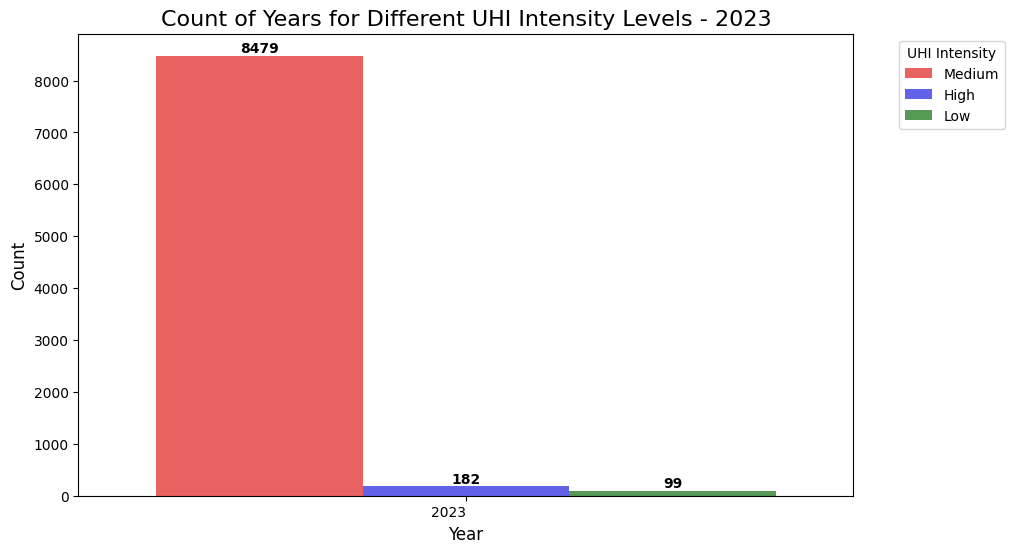Urban Climate Patterns: Analysis of Urban Heat Islands
INFO 523 - Fall 2023 - Project Final
Ajinkya Deshmukh
Dhanyapriya Somasundaram
Kendall Beaver
Riyanshi Bohra
Udit Chaudhary
What is an Urban Heat Island?
UHI Definition
- A UHI (“Urban Heat Island”) occurs when a city experiences much warmer temperatures than nearby rural areas.
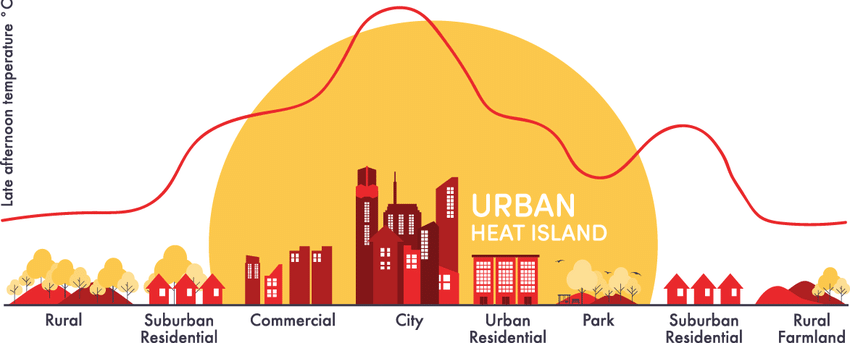
3 Cities for UHI Comparison
Dallas vs. Arlington vs. Denton
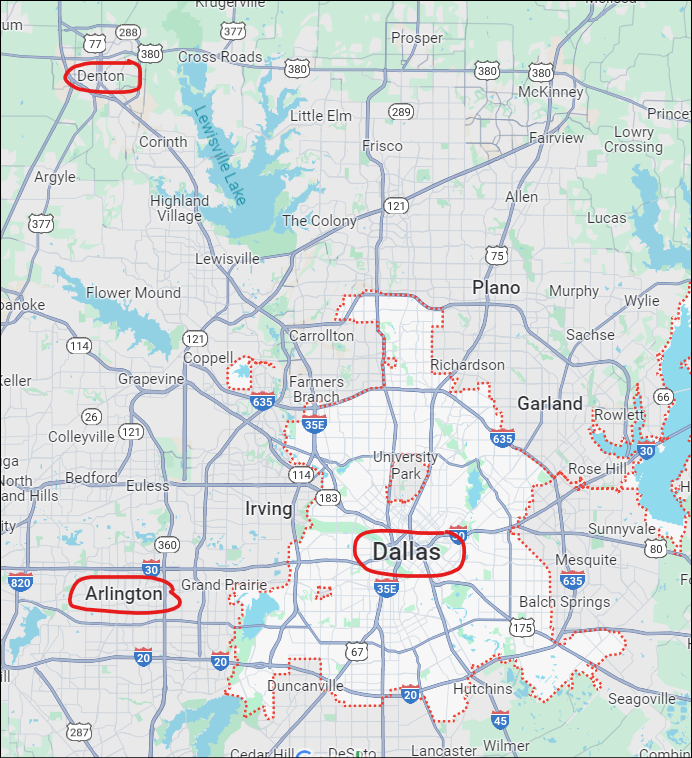
Datasets
Data Collection
- Three datasets for the year 2022 were obtained from the National Centers for Environmental Information, then combined into one major dataset.
Data Preprocessing and Cleaning
- Inspect the Data
- Handle Missing Values
- Ensure Temporal Integrity
Exploratory Data Analysis (EDA)
Conduct EDA to identify patterns and relationships in the climatic data.
This can include visualizations like time series plots, histograms, and scatter plots to understand temperature trends, humidity levels, etc.
Exploratory Data Analysis (EDA)
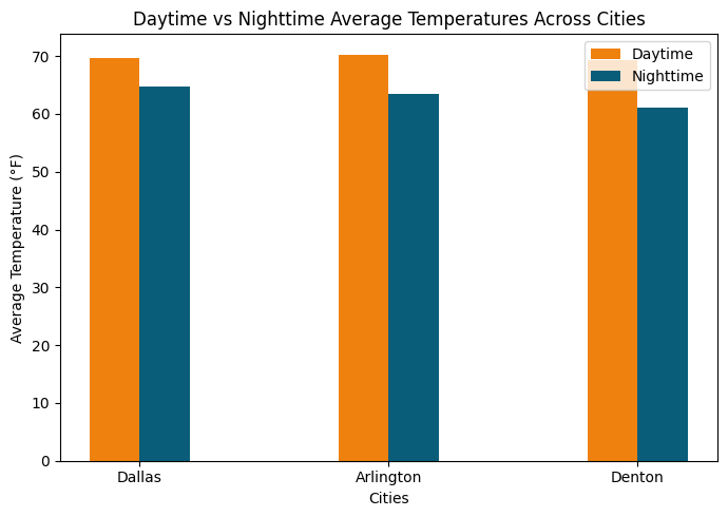
Exploratory Data Analysis (EDA)
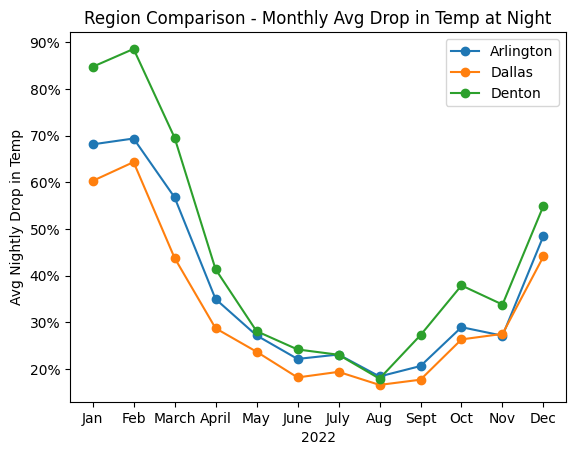
Feature Engineering
Create Seasonal Thresholds
Create and separate the data by “Seasons” and then create thresholds for each season based on the following weather conditions:
Hourly Dry Bulb Temperature
Hourly Relative Humidity
Hourly Wind Speed
Create Seasonal Thresholds
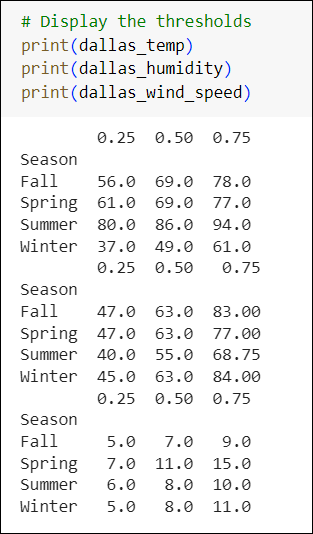
Feature Engineering
Design a classification function to label UHI intensities for hourly weather data.
def classify_uhi(row, temp_thresholds, humidity_thresholds, wind_speed_thresholds):
season = row['Season']
temp = row['HourlyDryBulbTemperature']
humidity = row['HourlyRelativeHumidity']
wind_speed = row['HourlyWindSpeed']
# Get the thresholds for the current season
temp_high = temp_thresholds.loc[season, 0.50]
temp_medium = temp_thresholds.loc[season, 0.25]
humidity_low = humidity_thresholds.loc[season, 0.25]
wind_speed_low = wind_speed_thresholds.loc[season, 0.25]
# Classify based on combined criteria
if temp > temp_high and humidity < humidity_low and wind_speed < wind_speed_low:
return 'High'
elif temp > temp_medium:
return 'Medium'
else:
return 'Low'Results of Classification Function

Classification Model Selection, Training, & Validation
Model Selection (80% Train / 20% Test)
Developed 5 classification models:
Decision Tree
Random Forest
XGBoost
Gradient Boost
SVM Classifier
Classification Model Results

Random Forest
rfc_model = RandomForestClassifier()
rfc_model.fit(X_train, y_train)
y_pred = rfc_model.predict(X_test)
print(classification_report(y_test, y_pred))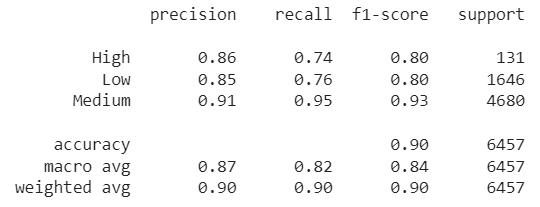
Additional Evaluation of Random Forest

Time Series Analysis
Time Series Analysis
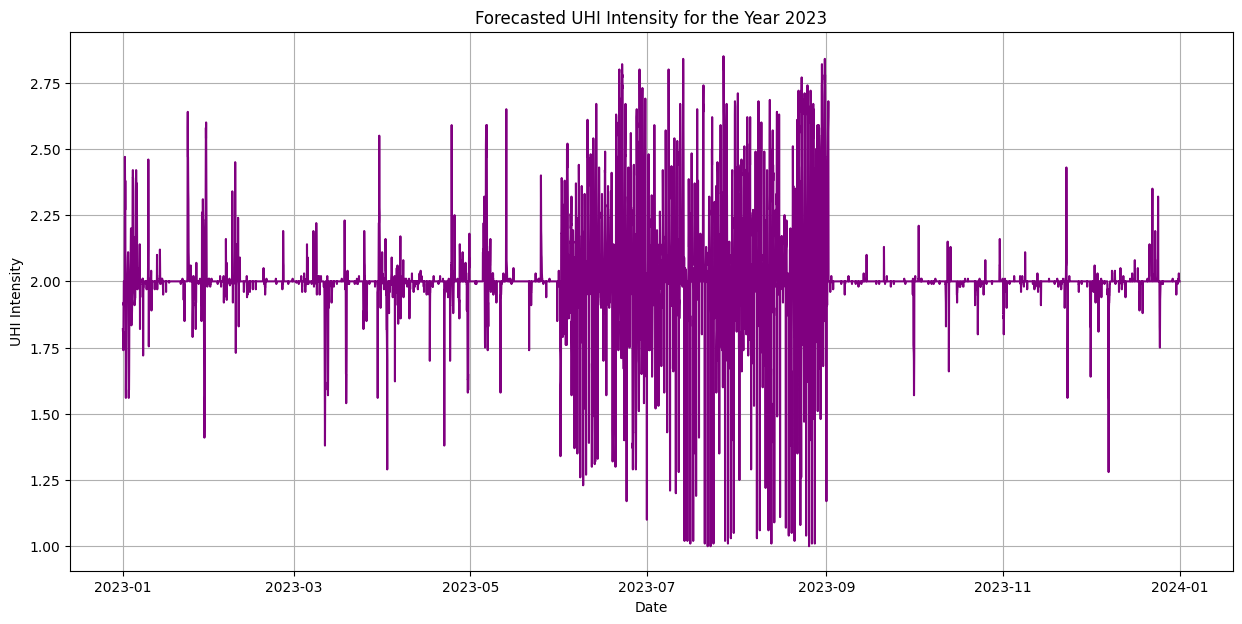
Time Series Analysis

Time Series Analysis
